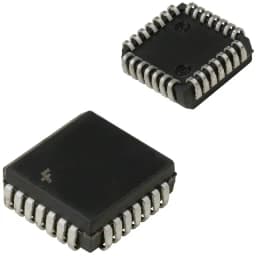
Early Days: The Birth of the Transistor
The journey of semiconductor manufacturing began in the late 1940s with the invention of the transistor by John Bardeen, Walter Brattain, and William Shockley at Bell Labs. This breakthrough technology replaced the vacuum tubes used in early electronics, allowing for smaller, more efficient devices. The first transistors were constructed from germanium, a material that offered limited performance and scalability.
As the demand for smaller and more reliable components grew, silicon emerged as the preferred semiconductor material in the 1950s. Silicon's abundance and superior electrical properties laid the foundation for the modern semiconductor industry. However, the manufacturing processes at that time were rudimentary, relying on manual assembly and simple techniques.
The Advent of Integrated Circuits
The introduction of integrated circuits in the late 1950s marked a turning point for the semiconductor industry. Pioneers like Jack Kilby and Robert Noyce developed the concept of combining multiple transistors into a single chip, drastically reducing size and cost. This innovation necessitated new manufacturing techniques to achieve the precision required for complex circuit designs.
The photolithography process emerged as a critical technology for IC manufacturing, enabling manufacturers to create intricate patterns on silicon wafers. As a result, the first microprocessors appeared in the 1970s, further driving advancements in semiconductor manufacturing.
The Era of Scaling Down: Moore's Law
The 1980s and 1990s witnessed an intense focus on miniaturization, driven by Moore's Law, which posited that the number of transistors on a chip would double approximately every two years. This trend led to the development of smaller process nodes, advancing from 10 micrometers to 7 nanometers and beyond.
Manufacturers adopted innovative technologies to keep pace with these demands. Extreme ultraviolet (EUV) lithography became a game-changer, allowing for the production of smaller, more powerful chips. The evolution of manufacturing processes enabled the creation of highly complex integrated circuits that powered everything from computers to mobile devices.
Innovations in Chip Design and Packaging
As the industry approached physical limitations with traditional scaling, new design philosophies emerged. The concepts of chiplets and 3D packaging gained traction as manufacturers sought ways to enhance performance without solely relying on smaller process nodes. Chiplet architectures allowed for the combination of different chip designs on a single substrate, optimizing flexibility and performance.
3D packaging techniques further revolutionized manufacturing processes, stacking multiple dies vertically to reduce interconnect lengths and improve signal integrity. This innovation was particularly beneficial for high-performance computing applications, where speed and efficiency are paramount.
Sustainability and Environmental Considerations
As semiconductor manufacturing evolved, so did its impact on the environment. The resource-intensive nature of the manufacturing process, which requires substantial amounts of water and energy, prompted industry leaders to adopt more sustainable practices.
Efforts are underway to improve energy efficiency in fabrication facilities and explore alternative materials that minimize environmental harm. The trend towards sustainability also includes initiatives to recycle materials from obsolete chips, creating a more circular economy within the industry.
The Role of Aichiplink in the Modern Semiconductor Landscape
In today’s interconnected world, sourcing integrated circuits has become more complex yet essential. Platforms like Aichiplink have emerged as vital resources for both manufacturers and consumers in the semiconductor industry.
With tools such as an IC database, users can easily perform an IC lookup or an IC number lookup, simplifying the process of finding the right integrated circuits. Aichiplink also features a chip finder tool, allowing users to quickly locate specific ICs based on their requirements. Whether you're looking to buy integrated circuits or seeking information on current source ICs, Aichiplink offers comprehensive resources to connect users with integrated circuit suppliers.
For those needing to find chips or conduct an IC search, Aichiplink serves as an invaluable asset. By leveraging its extensive database, users can access detailed specifications, availability, and pricing from various IC suppliers. This capability enhances procurement efficiency, ensuring that designers and engineers can find the exact components they need without unnecessary delays.
Looking Forward: The Future of Semiconductor Manufacturing
As we move further into the 21st century, the semiconductor industry is poised for continued evolution. Emerging technologies, such as quantum computing and advanced AI integration, promise to reshape manufacturing processes once again.
In this landscape, tools like Aichiplink will remain essential for those involved in semiconductor design and production. The ability to quickly find chips, explore integrated circuit suppliers, and navigate the complexities of modern semiconductor procurement will be critical for staying competitive.
Conclusion
The evolution of semiconductor manufacturing processes has been a fascinating journey, characterized by groundbreaking innovations and technological advancements. From the early days of transistors to the sophisticated integrated circuits of today, the industry has continually adapted to meet the demands of an increasingly digital world. Platforms like Aichiplink are vital in this landscape, offering valuable resources for finding and purchasing integrated circuits. As we look to the future, the synergy between manufacturing advancements and digital procurement tools will undoubtedly shape the next chapter in the semiconductor story.














